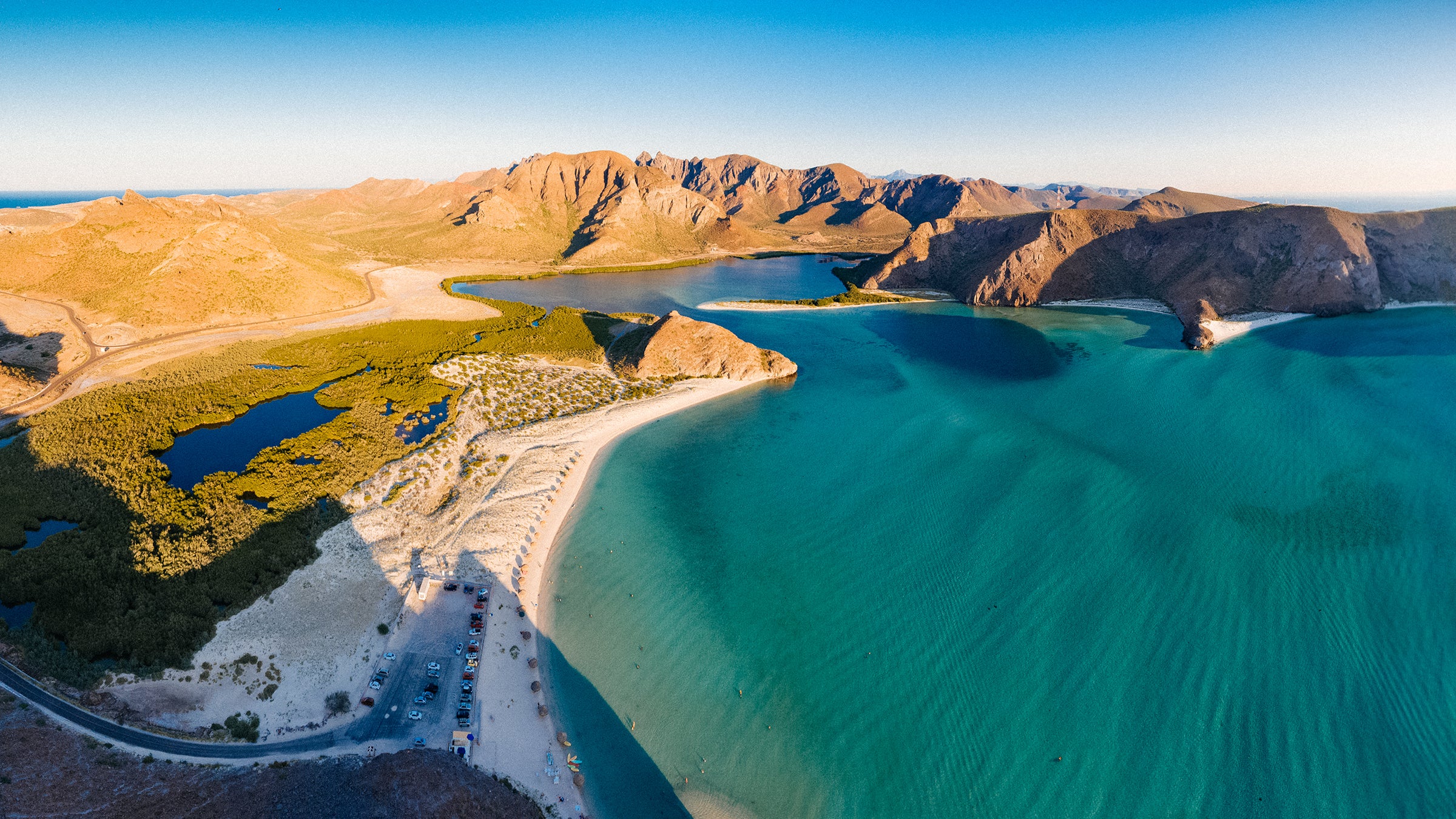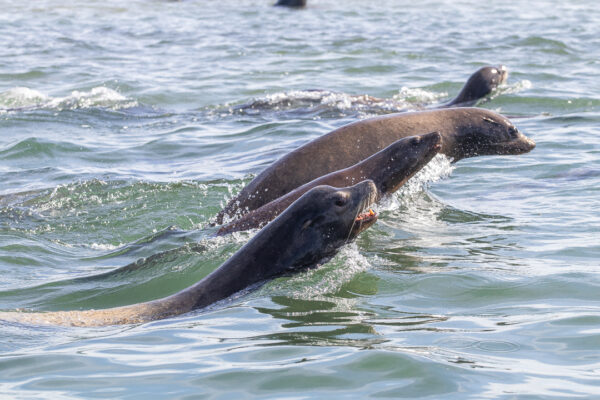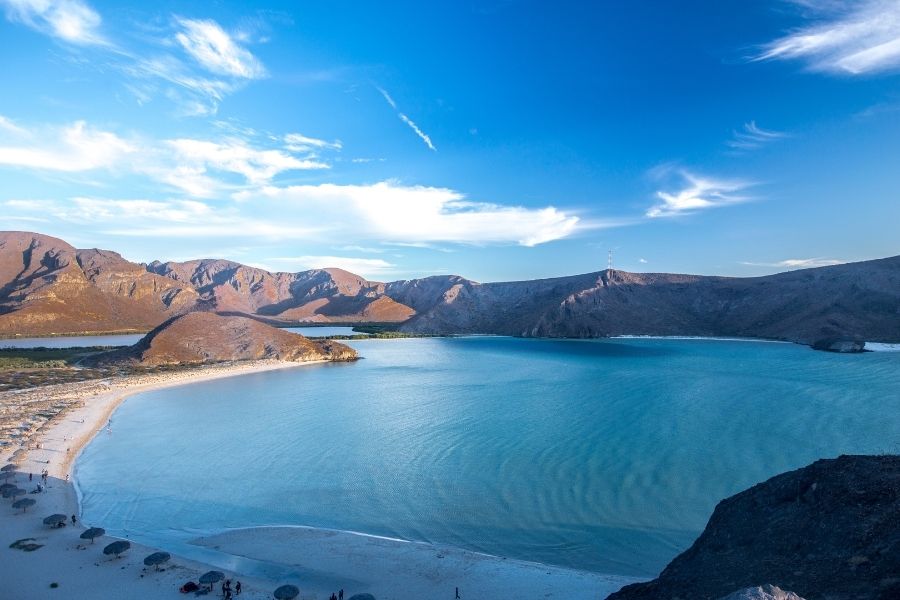So, have you ever wondered where you can find an abundance of astonishing wildlife? Well, you’re in luck! Today, we’re going to take a closer look at Mexico’s Baja California Peninsula, a true haven for nature enthusiasts. Get ready to be amazed by the incredible wildlife that calls this place home.
The Baja California Peninsula, situated at the northwestern part of Mexico, is a paradise for anyone fascinated by wildlife. From awe-inspiring marine creatures to fascinating land animals, this region has it all. The peninsula is surrounded by the Pacific Ocean to the west and the Sea of Cortez to the east, creating a diverse ecosystem that supports a wide variety of species.
In the crystal-clear waters surrounding the peninsula, you’ll find majestic whales such as the humpbacks and gray whales during their migration season. If you’re lucky, you might even witness their breathtaking displays of breaching and tail-slapping. Along the sandy beaches, you can spot nesting sea turtles making their way back to the sea after laying their eggs. And if you venture further inland, you’ll encounter unique land animals like bighorn sheep, mule deer, and even the elusive Baja California tree frog.
But wait, there’s so much more to explore! In upcoming articles, we’ll dive into the details of Mexico’s tourism, travel options, hotels, attractions, and of course, the stunning beaches. So stay tuned, because with each topic we cover, you’ll get a better understanding of why the Baja California Peninsula is a magnet for wildlife enthusiasts from all around the world. Get ready to plan your trip, because magical encounters with Mexico’s astonishing wildlife are just a plane ticket away!

Introduction
Welcome to the Baja California Peninsula, a natural paradise and haven for astonishing wildlife. Located in the northwestern part of Mexico, this breathtaking region is home to a unique and diverse range of flora and fauna. From vibrant coral reefs to majestic whales, from exquisite migratory birds to elusive desert foxes, the Baja California Peninsula offers a truly unparalleled experience for nature enthusiasts. In this article, we will delve into the incredible biodiversity that thrives in this region, explore the ecological reserves and national parks that protect these precious habitats, and discuss the impact of climate change on the wildlife that calls the peninsula home.
The Unique Biodiversity of Baja California Peninsula
The Baja California Peninsula is a treasure trove of biodiversity, boasting an array of marine creatures, spectacular birds, and fascinating desert dwellers. Its diverse ecosystems have evolved to adapt to the arid desert conditions, as well as the rich marine environment. Let’s embark on a journey through the remarkable wildlife that awaits you in this natural wonderland.

1. Marine Life
1.1 Colorful Coral Reefs and Tropical Fish
The waters surrounding the Baja California Peninsula are teeming with vibrant coral reefs and an incredible array of tropical fish. Snorkeling and scuba diving enthusiasts will be mesmerized by the kaleidoscope of colors and the diversity of marine life beneath the surface. From angel fish to parrot fish, from butterfly fish to triggerfish, the underwater world of Baja California is a sight to behold.
1.2 Majestic Whales and Dolphins
One of the most awe-inspiring experiences in the Baja California Peninsula is witnessing the annual migration of majestic whales. Gray whales, humpback whales, and blue whales travel thousands of miles to the warm waters of the peninsula’s lagoons to give birth and nurse their young. Dolphins also frequent these waters, putting on a captivating display of acrobatics and playfulness.
1.3 Enigmatic Sea Turtles
The Baja California Peninsula is a crucial nesting ground for various species of sea turtles, including the endangered loggerhead and green turtles. Witnessing the sight of these ancient reptiles laying their eggs on the sandy beaches is a truly magical experience. Conservation efforts have played a vital role in protecting these remarkable creatures and ensuring their survival for generations to come.
1.4 Playful Sea Lions
The peninsula is home to colonies of playful sea lions, which can often be seen sunbathing on rocks or frolicking in the ocean. These charismatic creatures put on quite a show with their agility and water acrobatics. Many tour operators offer the opportunity to swim alongside these sea lions, providing a once-in-a-lifetime experience of interacting with these lovable marine mammals.
2. Birds of Baja
2.1 Exquisite Migratory Birds
The Baja California Peninsula is a vital stopover point for countless migratory birds that journey from as far as Canada and Alaska to reach their wintering grounds. The peninsula’s wetlands and coastal areas provide an abundant food source for these feathered travelers, making it a birdwatcher’s paradise. From sandpipers to avocets, from egrets to herons, the sight of flocks of migratory birds is a true spectacle.
2.2 Rare and Endangered Species
Several rare and endangered bird species find refuge in the Baja California Peninsula. The peninsula’s unique habitats, including the wetlands and oasis, provide vital breeding and nesting grounds for these vulnerable birds. The Belding’s yellowthroat and the San Quintín kangaroo rat are just a few examples of the unique wildlife that can be found here.
2.3 Magnificent Raptors
Birds of prey, such as hawks, eagles, and falcons, are a common sight in the skies above the Baja California Peninsula. These magnificent raptors soar through the air, effortlessly hunting for prey or defending their territories. The sight of a bald eagle soaring against a backdrop of a dazzling desert sunset is an image that will forever be etched in your memory.
2.4 Flamboyant Tropical Birds
The peninsula is also home to a variety of tropical birds that add a splash of color to the already vibrant landscape. From the vibrant plumage of the red-crowned parrot to the flamboyant elegance of the Mexican jay, these tropical birds bring an element of tropical paradise to the Baja California Peninsula.

3. Desert Dwellers
3.1 Elusive Desert Foxes
The Baja California Peninsula is inhabited by a variety of desert dwellers, including the elusive desert foxes. These small, nocturnal creatures are masters of adaptation, surviving in the harsh desert environment by burrowing underground and emerging to hunt for food under the cover of darkness. Spotting one of these elusive foxes is a rare and thrilling experience.
3.2 Curious Desert Tortoises
Another fascinating resident of the desert is the desert tortoise. These gentle giants navigate the arid landscape with their slow and deliberate movements, carrying their protective shells as they go. It’s a humbling experience to encounter these ancient creatures and marvel at their resilience in the face of such unforgiving conditions.
3.3 Agile Desert Bighorn Sheep
The Baja California Peninsula is also home to the agile and majestic desert bighorn sheep. These magnificent animals have adapted to survive in the harsh desert environment, using their keen climbing abilities to navigate the rocky terrain. Observing a herd of these impressive creatures scaling the steep cliffs is a sight that will leave you in awe.
3.4 Iconic Roadrunners
The iconic roadrunner is a common sight in the deserts of the Baja California Peninsula. These distinctive birds, known for their ability to run at impressive speeds, are a symbol of the desert’s resilience and adaptability. Spotting a roadrunner darting across the desert landscape is a moment that encapsulates the spirit of this remarkable region.
4. Ecological Reserves and National Parks
To protect the unique biodiversity of the Baja California Peninsula, several ecological reserves and national parks have been established. These protected areas play a crucial role in conserving the natural habitats and providing a safe haven for the wildlife that calls this peninsula home. Let’s explore some of these remarkable reserves and parks.
4.1 Sierra de San Pedro Mártir National Park
Located in the northern part of the peninsula, Sierra de San Pedro Mártir National Park showcases the stunning natural beauty of Baja California. This park encompasses mountainous terrain and is home to diverse plant and animal species. It also boasts the highest peak in the region, Picacho del Diablo, which offers breathtaking views of the surrounding landscape.
4.2 Valle de los Cirios
Valle de los Cirios, located in the central part of the peninsula, is a unique reserve known for its iconic Cirio cacti. These towering cacti, also known as Boojum trees, stand tall and proud, creating an otherworldly atmosphere. The reserve is also home to several endemic plant and animal species, making it a must-visit for nature enthusiasts.
4.3 Bahía de los Ángeles
Situated on the eastern coast of the peninsula, Bahía de los Ángeles is a stunning marine reserve. Its crystal-clear waters provide a vital habitat for a diverse range of marine creatures, including dolphins, sea lions, and a variety of fish species. Snorkeling or kayaking in these pristine waters will allow you to witness the wonders of the underwater world up close.
4.4 Laguna Ojo de Liebre
Laguna Ojo de Liebre, also known as Scammon’s Lagoon, is a sanctuary for gray whales. This lagoon serves as a breeding and nursing ground for these majestic creatures. From January to April, visitors can embark on boat tours to witness the spectacular sight of mother whales nurturing their young calves, creating memories that will last a lifetime.

5. The Impact of Climate Change on Wildlife
While the Baja California Peninsula is a haven for astonishing wildlife, it is also vulnerable to the impacts of climate change. Rising temperatures and changing ocean currents pose significant threats to the fragile ecosystems that exist here.
5.1 Threats to Marine Life
The warming of the oceans and increasing acidity levels due to climate change have severe consequences for marine life. Coral reefs, the nurseries of the ocean, are particularly at risk. Rising water temperatures can lead to coral bleaching, causing irreparable damage to these delicate ecosystems. Additionally, the changing ocean currents can disrupt the migration patterns of marine creatures, affecting their ability to find food and reproduce.
5.2 Effects on Bird Migration
Changing climate patterns can also have a profound impact on the migration patterns of birds. Alterations in temperature and precipitation levels can disrupt the availability of food sources and nesting habitats. This can result in a decline in bird populations and a disturbance to the intricate web of life that depends on the seasonal movements of migratory birds.
5.3 Disruption of Desert Ecosystems
Desert ecosystems are particularly vulnerable to the effects of climate change. The Baja California Peninsula’s unique desert flora and fauna have evolved to survive in arid conditions, but prolonged droughts and increased temperatures can hinder their ability to adapt. This can lead to changes in plant distribution, affecting the entire ecosystem and the wildlife that relies on these plants for food and shelter.
Conclusion
Exploring Mexico’s Baja California Peninsula is a journey of discovery through an astonishing oasis of wildlife. From the vibrant marine life that thrives in its crystalline waters to the diverse bird species that grace its skies, and the majestic desert dwellers that roam its arid landscapes, this peninsula is a testament to the remarkable resilience and adaptability of nature. Through the establishment of ecological reserves and national parks, efforts are being made to protect and preserve this precious biodiversity. However, the growing threats of climate change serve as a stark reminder of the need to continue our conservation efforts and ensure that future generations can also experience the awe-inspiring beauty of the Baja California Peninsula. So pack your camera, put on your hiking boots, and embark on an unforgettable adventure to this haven for astonishing wildlife.